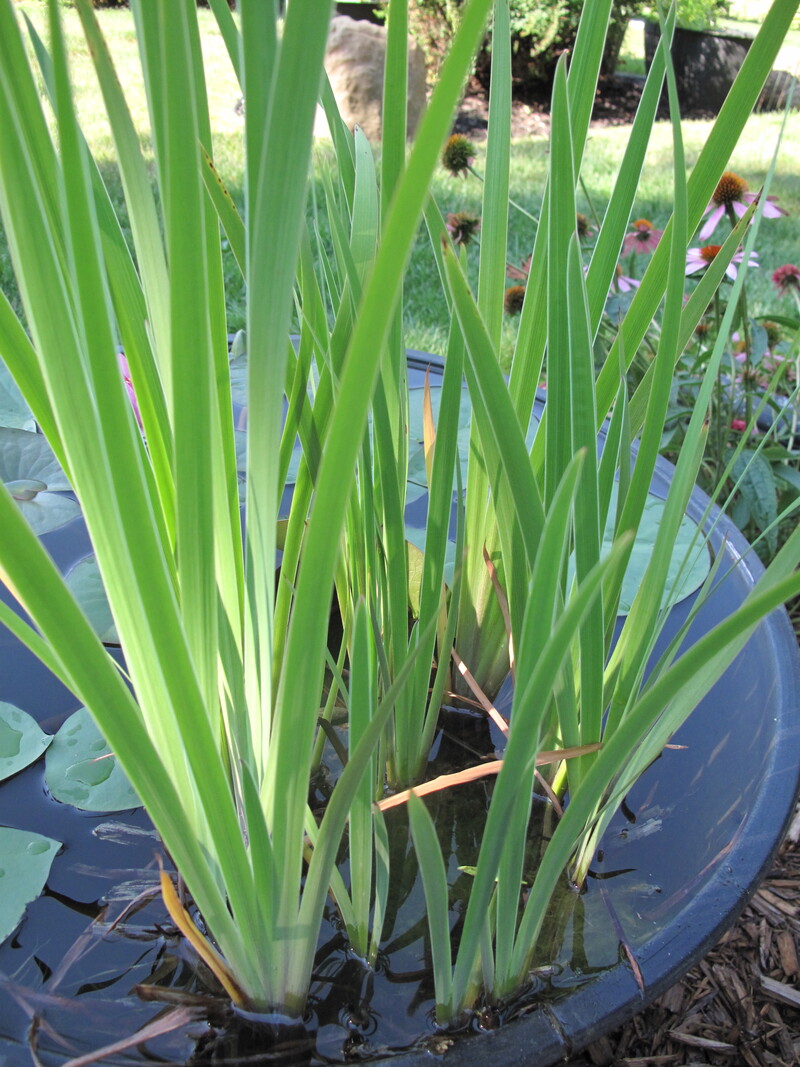WHATS GOING ON in the gardening world?
Here you can check out the happenings of other clubs. See their events, meetings, etc.
Click on any event on the calendar for more detail. Or, Click on a Club/Society above for more information and links to websites. Want your Club here -- click on 'Contact' on the menu above.
What's New? See articles below calendar and check the Bullets in white
Click on any event on the calendar for more detail. Or, Click on a Club/Society above for more information and links to websites. Want your Club here -- click on 'Contact' on the menu above.
What's New? See articles below calendar and check the Bullets in white
New Article by Soni Forsman
" Just Add Water"
By Soni Forsman -- previous articles under "Just Add Water" bullet above
Iris Versicolor ‘Purple Flame’
Iris Versicolor ‘Purple Flame’ is a newer flag iris for wetlands and water gardens, the first with two-colored foliage. In early spring the foliage emerges dusty purple and gradually fades to green as the weather warms. The flowers resemble the species Blue Flag but a little more purple. Like other flag iris, it needs full to part sun and blooms in late spring/early summer.
'Purple Flame' foliage is mostly dusty purple in mid-May.

This unique iris is a Mt. Cuba Center introduction hitting the market in 2020. Mt. Cuba Center is a botanic garden near Wilmington, Delaware dedicated to native plants and saving their habitats. The Center is known for its spectacular displays of wildflowers. Gardeners at the Center took notice of this unusual blue flag iris growing near the Center’s ponds years ago. Eventually, the iris was trialed for three years to assess its value to beneficial insects and the commercial market. ‘Purple Flame’ earned an all-star rating and a spot in the Mt. Cuba Collection. The center does not propagate its plants for sale but releases those it deems commercially worthy to the nursery trade for propagation and distribution. Mt. Cuba reports ‘Purple Flame’ is hardy in zones 2-7 and flourishes in wetlands in the Northeast, Mid-Atlantic and Upper Midwest.
Lots of flower buds held high on purple petioles in mid-June. More green foliage.
I spotted this iris in a perennial /annual catalog in early 2020. The description was intriguing and it said the iris would be shipped dormant in a two-inch pot. That is not how it arrived. It came in a two-by-four-inch plastic bag that closed with a zipper. Inside was a little peat moss-like material protecting something green that looked like a ‘wide’ blade of grass. No roots but one end of the blade was pointed so I assumed the other went into the soil. It became a small iris plant that first season. I upsized the young iris into a two-gallon grower’s pot in 2021.
The rest of the story is illustrated in pictures – Iris versicolor ‘Purple Flame,’ 2022.




